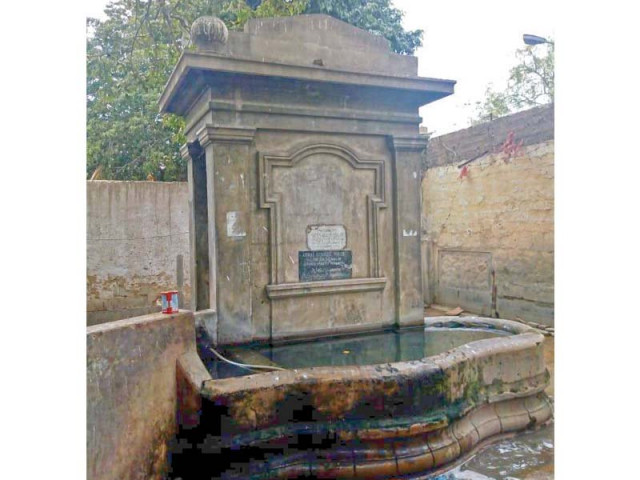
Post-partition, the maintenance of the water troughs fell under the purview of the Karachi Metropolitan Corporation (KMC). Over the years, land grabbers took their pick, while other troughs were left to decay as the KMC as well as the Society for the Prevention of Cruelty to Animals (SPCA) made no efforts for their preservation.
Most of these troughs were established and run by the Parsi community. However, with few members of the community remaining in Karachi, the troughs lie forgotten, sans water.
Combating animal cruelty
The SPCA was established in 1878 to check cruelty against animals, after which water troughs were built at various locations across the city to provide drinking water to horses, camels, donkeys and others, used as a means of transportation.
Karachiites had started coming together to establish these water troughs as a means of charity and started naming them after their deceased loved ones. Reportedly, more than 30 water troughs were built at the time, for which caretakers were employed to ensure water supply, maintenance and sanitation. The staff's salaries were paid for by the SPCA.
Animal lover turns passion into profit
These water troughs were built on the busiest thoroughfares, such as the one leading from Guru Mandir to Tower. Most were built under big old trees with stones. Some were built near horse cart stands to serve as the main source of drinking water for horses.
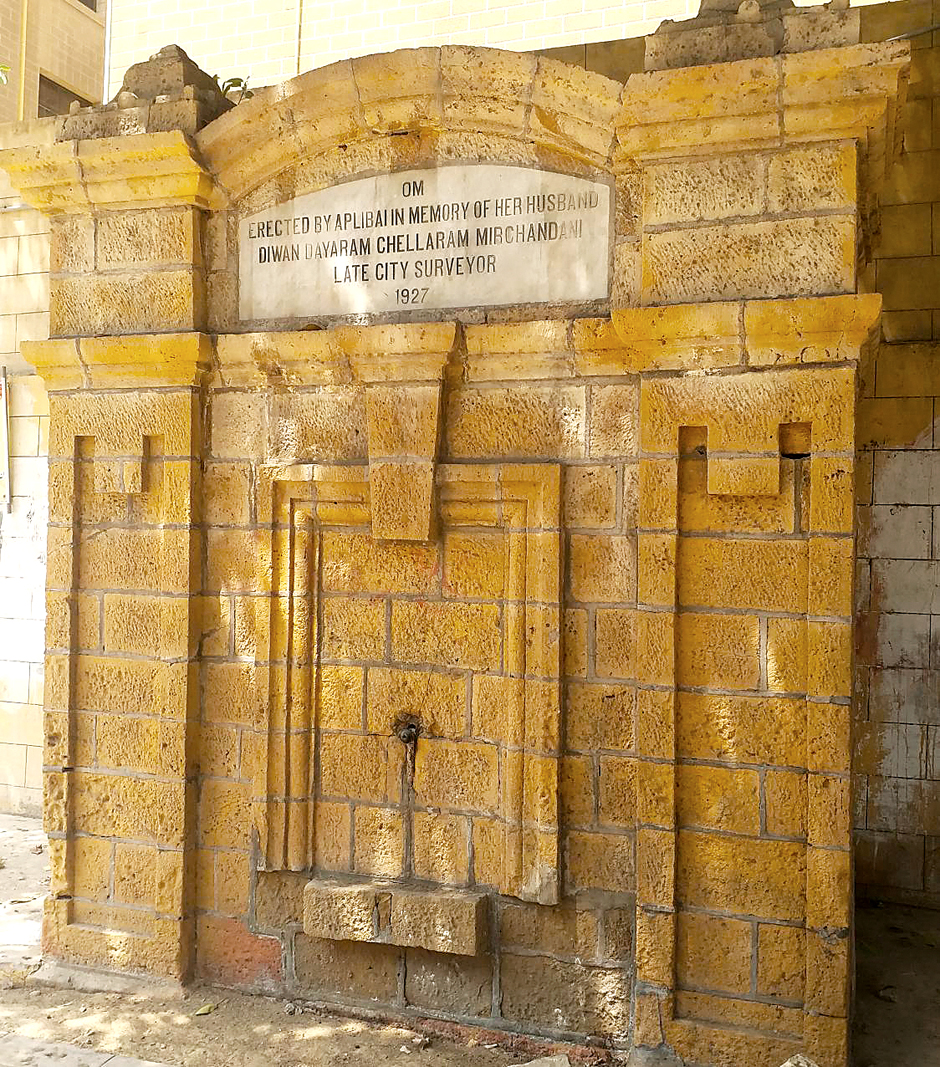
All that is left
While people passing through the surroundings of Soldier Bazaar still see the decaying structures of these troughs, little do they know they are looking at some of the most significant pieces of Karachi's not-so-ancient history. Unfortunately, these significant stone structures, having lost their actual purpose years ago, are now only landmarks for stall owners who have set up their stalls in front of them.
One of these structures is built on the crossing of the road going towards Soldier Bazaar. Stalls of sugarcane and fruit juices have been set up in front of the water trough, while other encroachments are also seen in surrounding areas. K-Electric seems to have given these establishments a permanent status by installing electricity metres on the walls of the structure.
Karachi's displaced animals, birds find new home on vacant plot
This water trough built in 1924 at Soldier Bazaar was named after Framroze E. Punthakey, who was the Honorary Secretary General of SPCA from 1878 to 1921. The administration of this water facility is in the hands of Imtiaz Khan's family since three generations. Sixty-year-old Khan's grandfather, Miskeen Khan, and then father Bahadur Khan, had been managing this facility since the British era.
Khan's family has been selling grass and fodder at this place since before the creation of Pakistan as well as running this water trough. He says that this trough was functional till six years ago. The locals and shopkeepers of the area also drew water from here. The third generation of the Parsi family, who built this water trough, is still in contact with Khan. They last visited the place six years ago when they were visiting Karachi. They help Khan through their manager or other relatives despite residing abroad.
Toilets were also built around this water trough about 20 years ago, which were razed when the columnist Ardeshir Cowasjee brought together the Parsi community to use their influence in saving the facility.
According to Khan, the Parsi family has decided to resume this water trough again. The repair of its structure, water connection and installation of the water pump will be done on their next visit to Pakistan. He said that he painted and maintained the trough at his own expense. Khan, who is a resident of Bhains Colony, earns his livelihood by selling grass and fodder for livestock animals. Two of his four children are specially-abled. One of them died at the age of 24. His daughter, who is reaching the same age, also shows signs of some disability.
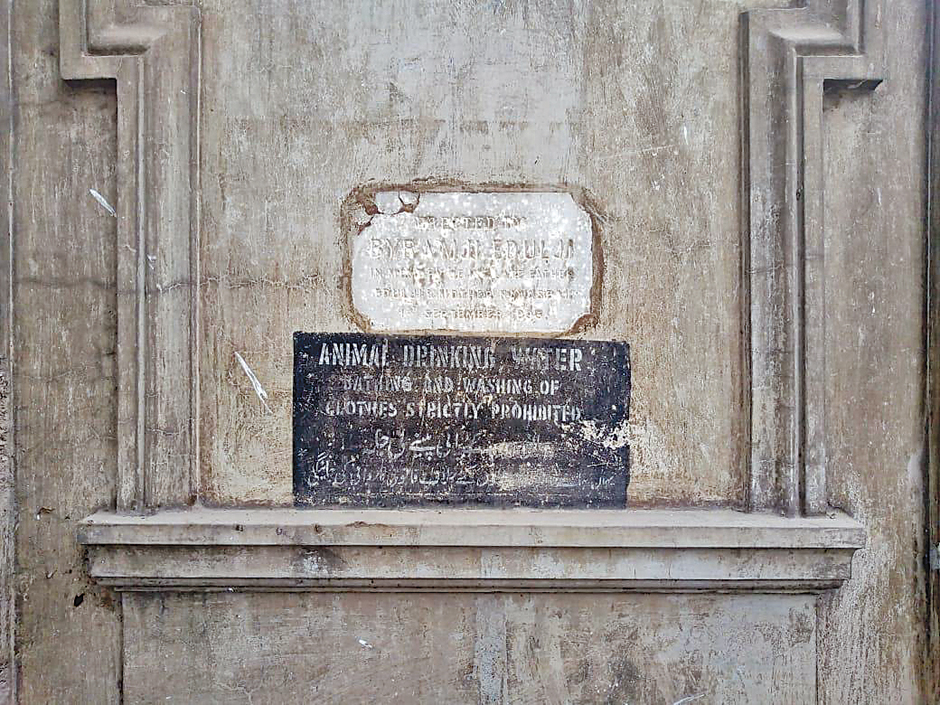
Saving the last
The water supply from the 125-year-old water trough located at the back of KMC Park at Guru Mandir is still operational through the efforts and dedication of an 81-year-old citizen Abdur Rehman, a resident of Korangi. This is the only operational historic water trough left in the city. This trough was established by a Parsi citizen Byramji Edulji in 1893 in his parents' name. Rehman looks after the trough and he is the one who restored the disconnected water supply. Rehman says that he will be fulfilling this responsibility till his last breath.
Since the age of 35, Rehman has been assigned this duty. For his livelihood, he sold soaps and other things on a little wooden case, which was later converted into a small cabin. Rehman provides water to the animals free of charge from this trough. Although bathing and washing clothes is restricted through a description written on the walls of the trough, labourers are seen bathing here due to the water shortage in the city while small vehicles are also washed. Rehman says that the water supply has been suspended various times due to the development works of sewerage and electricity lines. The operation of the trough couldn't ever be completely terminated as the Karachi Water and Sewerage Board (KWSB) has cooperated, said Rehman.
Rehman migrated to Karachi from Munabao Khokrapar border at the time of partition from Agra to Ahmedabad alone at the age of ten. He carried out his journey in hunger and thirst continuously for three days. The armed forces deployed at the border stopped him from entering Pakistan due to the unavailability of identity certificates. However, a woman in a white veil helped him enter Pakistan. He believed the woman was his deceased mother.
This trough may be a mere facility for the people but for Rehman, it holds an important place in his life as he spent his life looking after the trough. He earned his living by selling inexpensive things and got six daughters of his deceased brother married. Rehman wishes to visit the Holy Kaaba for pilgrimage and he believes that his wish will come true even in the absence of resources. Rehman's eyes filled with tears when he remembered the lost magnificence of Karachi and sighed, "Karachi is not the same anymore."
Lost meaning
Another beautiful water trough near Dow Medical College has been the symbol of love for 90 years. This public water facility was built by Karachi City Surveyor Diwan Dayaram Chellaram Mirchandani's wife Srimati Aplibai in memory of her husband in 1927. The time when there was a trend of having public facilities built in the memory of loved ones. The students of Dow Medical College restored this watering trough in 1995. However, this historical heritage is without water supply since the last few years due to negligence.
Another nameless water trough, present at the footpath beside the Native Jetty Bridge after the Merewether Clock Tower, is also awaiting the attention of authorities and custodians of historical heritage. It would not be wrong to call this water trough, which looks like the graves of Chaukhandi Tombs, a masterpiece of art.
However, the facility, which facilitated thousands of people and animals for decades, is now standing thirsty itself. The trough has been neglected while beautiful poles stand around it. The spectacular lattice work made of stones built step-by-step still receives the tribute of the stonecutters of that time. A boundary wall with particular pattern of design also surrounds the structure in which little arches are built on the bottom.
Bags of dirty clothes are put inside this water trough now, which certainly are placed there by the homeless. This structure is indeed a forgotten piece of architecture which should be restored to acquaint the upcoming generations with the magnificent past of the city.
Published in The Express Tribune, February 7th, 2019.
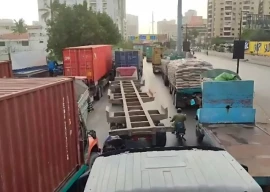
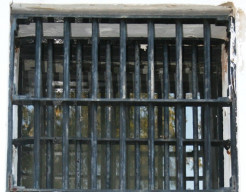

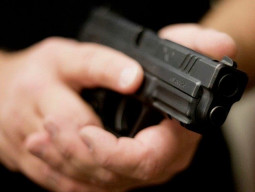

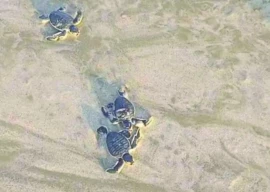












COMMENTS
Comments are moderated and generally will be posted if they are on-topic and not abusive.
For more information, please see our Comments FAQ